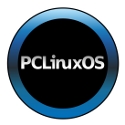Today’s top Linux distributions
Last updated Aug 9, 2010 — 6404 views DistroWatch, the popular Linux distribution-tracking website, publishes a page listing what it judges to be the ten most widely-used Linux distributions globally. This post provides a brief overview of each distribution on DistroWatch’s current “Top Ten Distributions” list, which range from the newbie-friendly Ubuntu to the sysadmin-oriented Gentoo.
DistroWatch, the popular Linux distribution-tracking website, publishes a page listing what it judges to be the ten most widely-used Linux distributions globally. This post provides a brief overview of each distribution on DistroWatch’s current “Top Ten Distributions” list, which range from the newbie-friendly Ubuntu to the sysadmin-oriented Gentoo.
The list below reflects the “DistroWatch 10” list sorted by popularity (higher = more popular), along with DeviceGuru’s brief overview of each. Click each distribution’s name to visit its website.
| Note: the set of distributions below differs from the top ten currently on DistroWatch’s “Page Hit Ranking” list (see right-hand column on DistroWatch home page), which arguably provides an alternative measure of worldwide user interest. In that list, the highest ten currently are: Ubuntu, Fedora, Linux Mint, openSUSE, PCLinuxOS, Debian, Mandriva, Sabayon, Arch, and Puppy. As DistroWatch states on its major distributions page, the OSes listed there are “10 Linux distributions … which are generally considered as most widely-used by Linux users around the world.” The page also notes that “there are no figures to back it up and there are many other distributions that might suit your particular purpose better, but as a general rule, all of these are popular and have very active forums or mailing lists where you can ask questions if you get stuck.” |
 Ubuntu — Available in desktop, netbook, server, and “cloud” versions, Ubuntu’s core is built from Debian Linux packages along with the GNOME desktop environment. Numerous community-supported Ubuntu variants are also available, including ones having KDE (Kubuntu) and Xfce (Xubuntu) desktop environments. Ubuntu features a professional-looking, user-friendly installer, well-oiled package management infrastructure, and optional commercial support from Canonical, which is Ubuntu’s creator and sponsor. Here at DeviceGuru, Ubuntu has become the desktop OS of choice.
Ubuntu — Available in desktop, netbook, server, and “cloud” versions, Ubuntu’s core is built from Debian Linux packages along with the GNOME desktop environment. Numerous community-supported Ubuntu variants are also available, including ones having KDE (Kubuntu) and Xfce (Xubuntu) desktop environments. Ubuntu features a professional-looking, user-friendly installer, well-oiled package management infrastructure, and optional commercial support from Canonical, which is Ubuntu’s creator and sponsor. Here at DeviceGuru, Ubuntu has become the desktop OS of choice.
 Fedora — The Fedora Project is sponsored by Red Hat, which says it invests in the project’s infrastructure and resources to “encourage collaboration and incubate innovative new technologies,” some of which it later integrates into Red Hat products. Being released under free and open source licenses, the project’s software is also available for incorporation into other distributions. Consequently, Fedora has much in common with Red Hat Enterprise Linux (RHEL), although, as DistroWatch suggests, it “lacks a clear desktop-oriented strategy that would make the product easier to use for those beyond the ‘Linux hobbyist’ target.” Fedora (like Red Hat) offers a choice of either KDE or GNOME desktop environments, and also provides a choice of two package managers: the graphical YUM and command-line RPM utilities.
Fedora — The Fedora Project is sponsored by Red Hat, which says it invests in the project’s infrastructure and resources to “encourage collaboration and incubate innovative new technologies,” some of which it later integrates into Red Hat products. Being released under free and open source licenses, the project’s software is also available for incorporation into other distributions. Consequently, Fedora has much in common with Red Hat Enterprise Linux (RHEL), although, as DistroWatch suggests, it “lacks a clear desktop-oriented strategy that would make the product easier to use for those beyond the ‘Linux hobbyist’ target.” Fedora (like Red Hat) offers a choice of either KDE or GNOME desktop environments, and also provides a choice of two package managers: the graphical YUM and command-line RPM utilities.
 openSUSE — OpenSUSE is a stable, easy-to-use, complete, multi-purpose Linux distribution that’s popular for both desktop and server use. Additionally, the distribution serves as the base for Novell‘s popular SUSE Linux Enterprise Distribution (SLED) products. One interesting aspect of SUSE Linux is Novell’s partnership with Microsoft, through which Redmond officially recommends SLED to Windows shops known to have Linux requirements, and collaborates with Novell on several interoperability fronts. OpenSUSE (like SLED) features a choice between highly-polished KDE and GNOME desktop environments, plus the powerful and user-friendly YaST package management tool. Like Fedora, openSUSE uses the popular RPM package management architecture.
openSUSE — OpenSUSE is a stable, easy-to-use, complete, multi-purpose Linux distribution that’s popular for both desktop and server use. Additionally, the distribution serves as the base for Novell‘s popular SUSE Linux Enterprise Distribution (SLED) products. One interesting aspect of SUSE Linux is Novell’s partnership with Microsoft, through which Redmond officially recommends SLED to Windows shops known to have Linux requirements, and collaborates with Novell on several interoperability fronts. OpenSUSE (like SLED) features a choice between highly-polished KDE and GNOME desktop environments, plus the powerful and user-friendly YaST package management tool. Like Fedora, openSUSE uses the popular RPM package management architecture.
 Debian — Unlike the distributions higher up in this list, all three of which are backed by commercial entities, “Debian GNU/Linux” is a fully community-based project. It’s highly popular for desktop, server, and embedded uses, and is supported by over 25,000 precompiled packages. Plus, it features powerful, easy-to-use package management utilities in both graphical and command-line versions. Although the distribution’s default desktop environment is GNOME, other alternatives including KDE, Xfce, and others. DeviceGuru has been a staunch fan of Debian on servers and desktops for many years, but eventually moved to Ubuntu based on the latter’s enhanced selection of bundled applications and drivers. Still, there’s just about nothing you can’t do with Debian, in our opinion!
Debian — Unlike the distributions higher up in this list, all three of which are backed by commercial entities, “Debian GNU/Linux” is a fully community-based project. It’s highly popular for desktop, server, and embedded uses, and is supported by over 25,000 precompiled packages. Plus, it features powerful, easy-to-use package management utilities in both graphical and command-line versions. Although the distribution’s default desktop environment is GNOME, other alternatives including KDE, Xfce, and others. DeviceGuru has been a staunch fan of Debian on servers and desktops for many years, but eventually moved to Ubuntu based on the latter’s enhanced selection of bundled applications and drivers. Still, there’s just about nothing you can’t do with Debian, in our opinion!
 Mandriva — Like most popular Linux distributions, Mandriva offers a choice of installing either the KDE or GNOME desktops. It initially was derived from Red Hat Linux and, as such, continues to use the RPM package management architecture. As DistroWatch notes, Mandriva’s “best loved features are cutting edge software, superb system administration suite (DrakConf), excellent implementation of its 64-bit edition, and extensive internationalization support.” DeviceGuru was an early fan of Mandrake (the original name for Mandriva), based on its ease of installation and use and extensive hardware support, but later on migrated to Red Hat, SUSE, Debian, and eventually Ubuntu.
Mandriva — Like most popular Linux distributions, Mandriva offers a choice of installing either the KDE or GNOME desktops. It initially was derived from Red Hat Linux and, as such, continues to use the RPM package management architecture. As DistroWatch notes, Mandriva’s “best loved features are cutting edge software, superb system administration suite (DrakConf), excellent implementation of its 64-bit edition, and extensive internationalization support.” DeviceGuru was an early fan of Mandrake (the original name for Mandriva), based on its ease of installation and use and extensive hardware support, but later on migrated to Red Hat, SUSE, Debian, and eventually Ubuntu.
 Linux Mint — Featuring a choice of GNOME, KDE, Xfce, Fluxbox, and LXDE desktop environments, Linux Mint is derived from — and compatible with — the latest versions of Ubuntu, but sweetened with a generous helping of multimedia codecs, drivers, and applications. Hence, the distribution benefits from the extremely large base of Ubuntu and Debian software applications, while providing enhanced multimedia capabilities. As with many less-than-mainstream Linux projects, Linux Mint tends to push the envelope of incorporating new driver, kernel, and application software versions into its mainstream releases. This, of course, can be both a blessing and a curse, depending on your system requirements; but for media-center PCs, it’s a good one to try.
Linux Mint — Featuring a choice of GNOME, KDE, Xfce, Fluxbox, and LXDE desktop environments, Linux Mint is derived from — and compatible with — the latest versions of Ubuntu, but sweetened with a generous helping of multimedia codecs, drivers, and applications. Hence, the distribution benefits from the extremely large base of Ubuntu and Debian software applications, while providing enhanced multimedia capabilities. As with many less-than-mainstream Linux projects, Linux Mint tends to push the envelope of incorporating new driver, kernel, and application software versions into its mainstream releases. This, of course, can be both a blessing and a curse, depending on your system requirements; but for media-center PCs, it’s a good one to try.
 PCLinuxOS — Another community-supported Linux project, PCLinuxOS is based on a mixture of packages derived from Fedora, OpenSUSE, and Mandriva, plus others of its own creation. Additionally, the project utilizes a number of packages derived from the Ubuntu, Debian, PLD, and Charka repositories. Interestingly, although PCLinuxOS’s package management architecture uses the RPM format (as do Fedora, OpenSUSE and Mandriva), its default package manager is a version of Debian’s APT (advanced package management) utility, modified to work with RPMs. From the desktop environment perspective, PCLinuxOS is available preconfigured with one of the broadest sets of alternatives: KDE, GNOME, GNOME ZenMini, Xfce, OpenBox, and Enlightenment.
PCLinuxOS — Another community-supported Linux project, PCLinuxOS is based on a mixture of packages derived from Fedora, OpenSUSE, and Mandriva, plus others of its own creation. Additionally, the project utilizes a number of packages derived from the Ubuntu, Debian, PLD, and Charka repositories. Interestingly, although PCLinuxOS’s package management architecture uses the RPM format (as do Fedora, OpenSUSE and Mandriva), its default package manager is a version of Debian’s APT (advanced package management) utility, modified to work with RPMs. From the desktop environment perspective, PCLinuxOS is available preconfigured with one of the broadest sets of alternatives: KDE, GNOME, GNOME ZenMini, Xfce, OpenBox, and Enlightenment.
 Slackware — Said to be the “oldest surviving Linux distribution,” Slackware features a choice of KDE and Xfce desktop environments and remains one of the most popular flavors of Linux among highly-technical users and system administrators. This distribution’s loyal following reportedly stems from its inclusion of very few custom utilities, along with the use of a “simple, text-based system installer and comparatively primitive package management system that does not resolve software dependencies,” suggests DistroWatch. System configuration is accomplished the old fashioned way — by editing text files. Why use Slackware? DistroWatch points out that “there is a saying in the Linux community that if you learn Red Hat, you’ll know Red Hat, but if you learn Slackware, you’ll know Linux.”
Slackware — Said to be the “oldest surviving Linux distribution,” Slackware features a choice of KDE and Xfce desktop environments and remains one of the most popular flavors of Linux among highly-technical users and system administrators. This distribution’s loyal following reportedly stems from its inclusion of very few custom utilities, along with the use of a “simple, text-based system installer and comparatively primitive package management system that does not resolve software dependencies,” suggests DistroWatch. System configuration is accomplished the old fashioned way — by editing text files. Why use Slackware? DistroWatch points out that “there is a saying in the Linux community that if you learn Red Hat, you’ll know Red Hat, but if you learn Slackware, you’ll know Linux.”
 Gentoo — Unlike the other distributions in this list, Gentoo’s packaging system primarily installs software from source code packages, compiled directly on the target system, although support for binary packages is also provided. As with Slackware, configuring Gentoo is done via text files. The community-supported project touts Portage, its package management tool, as “probably Gentoo’s most notable innovation in software management.” The project claims that “with its high flexibility and enormous amount of features, [Portage] is frequently seen as the best software management tool available for Linux.” The distribution supports the GNOME, KDE, Xfce, and LXDE desktop environments, among others.
Gentoo — Unlike the other distributions in this list, Gentoo’s packaging system primarily installs software from source code packages, compiled directly on the target system, although support for binary packages is also provided. As with Slackware, configuring Gentoo is done via text files. The community-supported project touts Portage, its package management tool, as “probably Gentoo’s most notable innovation in software management.” The project claims that “with its high flexibility and enormous amount of features, [Portage] is frequently seen as the best software management tool available for Linux.” The distribution supports the GNOME, KDE, Xfce, and LXDE desktop environments, among others.
 CentOS — This distribution is interesting — and highly popular — mainly because it’s essentially a clone of Red Hat Enterprise Linux (RHEL), but with Red Hat’s proprietary bits (e.g. Red Hat’s name, logo, and images) removed. Of course, it also come without Red Hat’s updates and technical support. But if you want RHEL and don’t want to pay for it, CentOS may be a good choice. By tracking RHEL, CentOS provides a more conservative, stable release than what’s found in Fedora’s cutting-edge packages, which accounts for CentOS’s popularity among sysadmins of infrastructure systems (e.g. servers) at penny-pinching enterprises and organizations. Like RHEL, CentOS offers a choice of mature, polished GNOME and KDE desktop environments and uses RPM package management utilities. Additionally, since it’s an RHEL clone, CentOS can be expected to be binary-compatible with its alter ego.
CentOS — This distribution is interesting — and highly popular — mainly because it’s essentially a clone of Red Hat Enterprise Linux (RHEL), but with Red Hat’s proprietary bits (e.g. Red Hat’s name, logo, and images) removed. Of course, it also come without Red Hat’s updates and technical support. But if you want RHEL and don’t want to pay for it, CentOS may be a good choice. By tracking RHEL, CentOS provides a more conservative, stable release than what’s found in Fedora’s cutting-edge packages, which accounts for CentOS’s popularity among sysadmins of infrastructure systems (e.g. servers) at penny-pinching enterprises and organizations. Like RHEL, CentOS offers a choice of mature, polished GNOME and KDE desktop environments and uses RPM package management utilities. Additionally, since it’s an RHEL clone, CentOS can be expected to be binary-compatible with its alter ego.
For details on literally hundreds of other currently active Linux distributions, head over to DistroWatch. Watch for reviews on each of these distributions here at DeviceGuru over the coming weeks.
You should rename this article “An overview of today’s top-ten desktop Linux distributions”. In servers, the tops are RH/Centos, Novell/Suse, Debian, and Slackware, in no particular order. The rest mentioned in your article have minuscule to no presence in the server market.
Point well taken. However, Ubuntu is certainly gaining more share of the server market, as evidenced by the migration of Hurricane Electric (he.net), which hosts this site, from Slackware to Ubuntu in recent years. Clearly, Mandriva, PCLinuxOS, and Linux Mint would go away.
Um – it’s actually not DW’s top 10 list – it’s just a list of what they term “Major Distributions”.
If you look at the PHR – and yes I know it’s not an accurate indicator – their top 10 would be in order:
Ubuntu, Fedora, Mint, openSuse, PCLOS, Debian, Mandriva, Sabyon, Arch and Puppy.
So your opening statement probably needs rewriting =>
“DistroWatch, the popular Linux distribution-tracking website, publishes a continually updated list of what it judges to be the ten most widely-used Linux distributions globally. This post provides a brief overview of each distro on today’s “DistroWatch 10″ list, which range from the newbie-friendly Ubuntu to the sysadmin-oriented Gentoo.”
This does not tie in with what you published.
Yes, I had already been aware that the 10 distributions on DistroWatch’s “major distributions” page do not match the top 10 distributions listed in the “page hit ranking” list on the home page’s right-hand column. However, by the site’s own description, the 10 on the “major distributions” page are… “10 Linux distributions … which are generally considered as most widely-used by Linux users around the world.” The site also explains that “There are no figures to back it up and there are many other distributions that might suit your particular purpose better, but as a general rule, all of these are popular and have very active forums or mailing lists where you can ask questions if you get stuck.”
Understood – but you still might want to change the heading and content of your article. Gentoo more popular than Arch ….. ? Or Sabyon ….. ? Or Puppy …. ?
BTW – disclaimer – I use none of the distributions you listed – and I have no axe to grind. I just don’t think your article is accurate 🙂